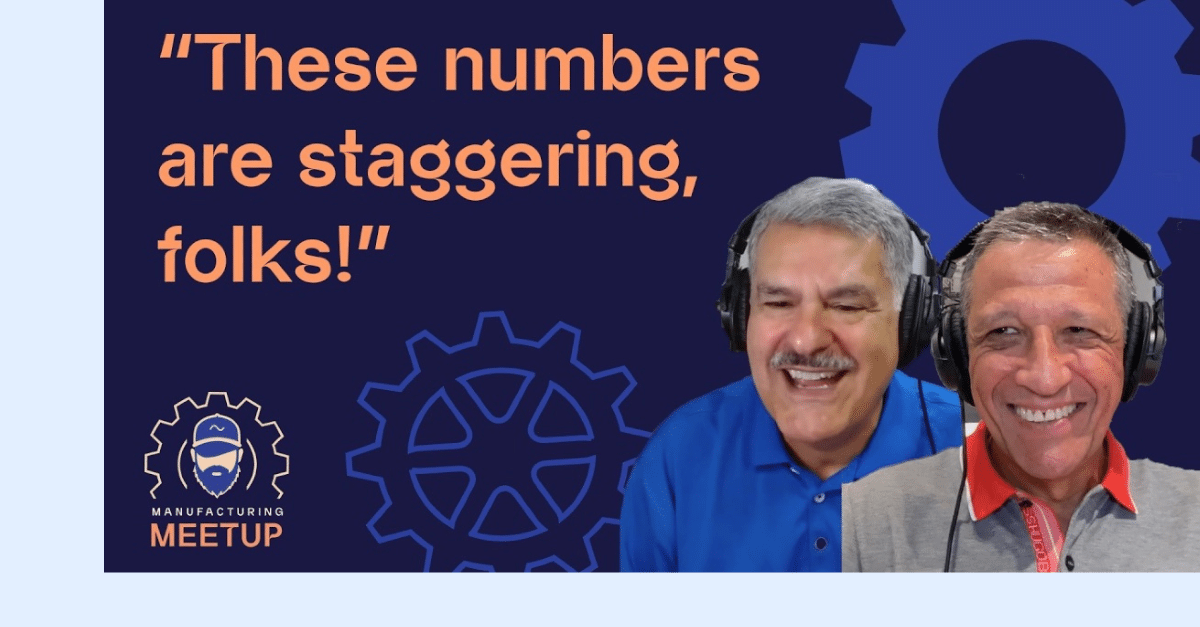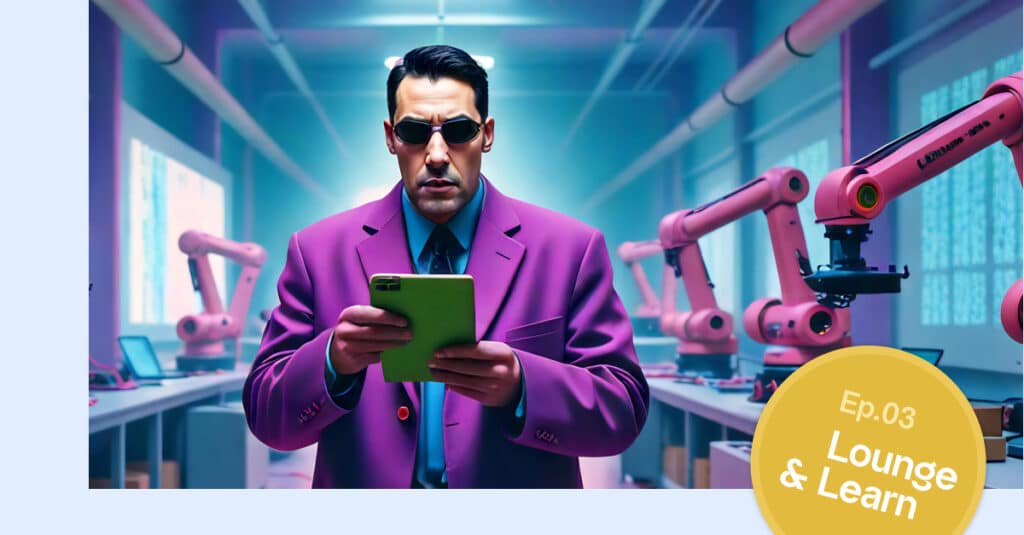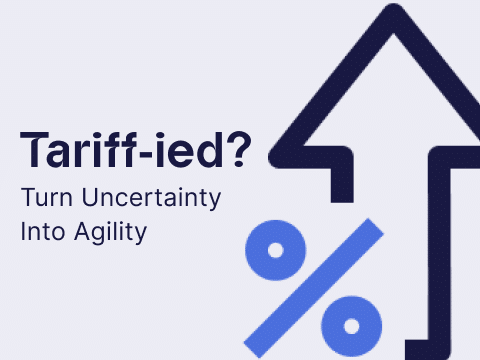
In a recent edition of the Manufacturing Meet Up podcast, hosts and industry veterans Alvaro Cuba and Ed Ballina discussed digital transformation, its impact on maintenance and reliability, and how its transforming manufacturing. They even offer a snappy history lesson. Let’s recap!
Coming To A Shop Floor Near You (If It Hasn’t Arrived Already)
The numbers don’t lie. Industry 4.0 is coming, and it’s coming fast, according to a number of recent surveys. For instance, in 2022, only 26% of manufacturers had started doing something with AI; two years later, that number is 86%. Today, the global market for artificial intelligence is around $4 billion; in 10 years, it’s predicted to be $156 billion. Meanwhile, in the last couple of years, 44%, almost half of the roles and responsibilities of the positions in the manufacturing arena have been changed and upgraded thanks to artificial intelligence.
In other words, we are very much talking about accelerated change. And if it hasn’t already arrived on your shop floor, it will very soon.
According to industry legends and early adopters Alvaro Cuba and Ed Ballina, during a recent episode of the Manufacturing Meet Up podcast, it’s best to prepare yourself.
Another Industry History Lesson à la Alvaro and Ed
What are we talking about when we talk about Industry 4.0? Ed and Alvaro gave an edifying summary of how we got here. And they give credit where credit is due: our furry and feathery friends in the animal world.
It all began many eons ago when monkeys started using sticks to scoop up delicious mouthfuls of ants, and birds began dropping clams from high heights to crack them open for a nice little chowder fest. Indeed: animals were the original tool inventors and jumpstarted what we’ve come to call manufacturing.
Regarding human progress, 4.0 began with 1.0 in the 18th century using mechanization and steam. Then in the first part of the 20th century, we embraced electricity and mass production. And then, at the beginning of the 21st century, with the Third Industrial Revolution, it became all about the internet, automation, and electronics.
4.0 Is Happening Fast But Not Fast Enough
So, we’ve finally arrived at the fourth big transformation – Industry 4.0 – which includes smart manufacturing, digitalization of the supply chain, synchronization, the full ecosystem, and everything related to AI and the Internet of Things, etc.
At its core, it’s about the connections between people, processes, and technology and making these connections as efficient as possible – not only in specific parts but across the entire end-to-end supply chain.
So yes, it’s an ambitious revolution. However, despite the surging statistics mentioned above, the implementers are still struggling to find savings. But with an onslaught as big as this one, the slow start can be considered natural growing pains while organizations try to figure out what works and what doesn’t.
Top Advice For Embracing AI In Manufacturing
Happily, Alvaro and Ed have already walked this road many times and offer quality advice:
1) Start Small: With Detecting Equipment Failures
Most manufacturers start with a particular use case: predicting asset failure. When assets don’t blow up, there is no collateral damage. Plus, there’s no greasy mess to clean up. And as we all know: a safe and clean workplace makes for a happier workplace. Hence, you’ve already won most of the battle.
From here, you can continue a process of continual improvement and expand to quality, process, yet more safety, etcetera.
2) Make Sure You Use Quality Data
You know the old saying: crap in, crap out. So maybe you should snap on some snazzy sensors to collect lots of quality and immediately interoperable data?
3) Think Security
You have to consider government regulations and hackers who may be after your luscious IP. So perhaps that’s another reason to have your own internal system to collect data.
4) Keep Your Eye On The Three Balls: People, Process, And Technology. And In That Order!
Start with your people: What training do they need to get prepared, open, and excited about what is to come? They shouldn’t be worried about losing their jobs – they are just getting tools to do their jobs better. As for processes, AI can do a lot: analytics, data, data mining, and the ability to help make fast and accurate decisions. Say goodbye to trial and error! Only then can you start thinking about increasing automation, etc.
5) Think Big: The True Value Comes When You Start Putting Different Systems Together
Machine Health is great, Process Health is great, and safety is great. But the true value arrives when you start combining these and other aspects for even deeper insights. As you strive for full Production Health with maintenance and operations joining forces, the benefits don’t just add up; they multiply because of their synergy with each other.
6) Benchmark, Benchmark, Benchmark
How do you know you’re winning if you don’t keep score? It can start simple: tracking your mechanical uptime and/or your energy usage. But as your various solutions start to interact and influence each other, you will also need more complex KPIs that may go beyond your regular P&L. Overall carbon footprint? Labor turnover? Supply chain partner satisfaction? Etcetera.
But yes, for now, the low-hanging fruit remains elaborating on your line uptime. How much are you saving in terms of operating costs, waste, and labor?
7) Don’t Be Afraid. Trailblazers Came Before You
This stuff has been around for a while. There are now many paths that have been carved into the woods for you to follow. Take advice! Learn from others! We’re already basically drowning in too much data. Let’s use it. This is the promise of AI: it can streamline all this data so we don’t have to spend all this time gathering and analyzing it ourselves. Thanks to AI, the data is now given to us in bite-sized actionable chunks.
Listen, like, share, and subscribe to the full podcast ‘AI and the New Era of Manufacturing’.




